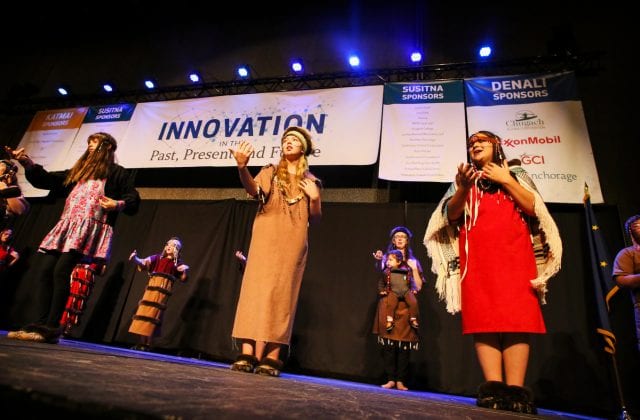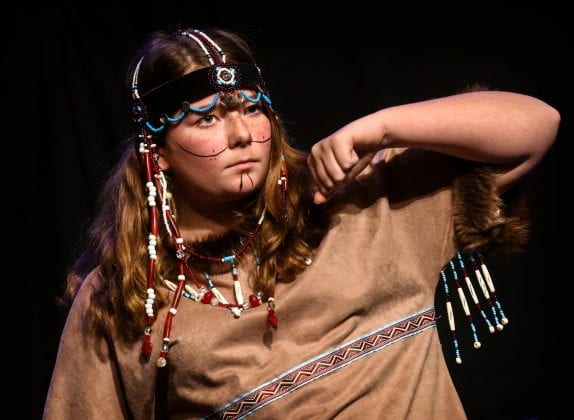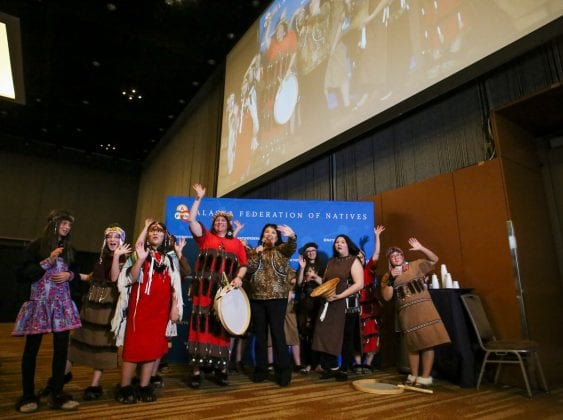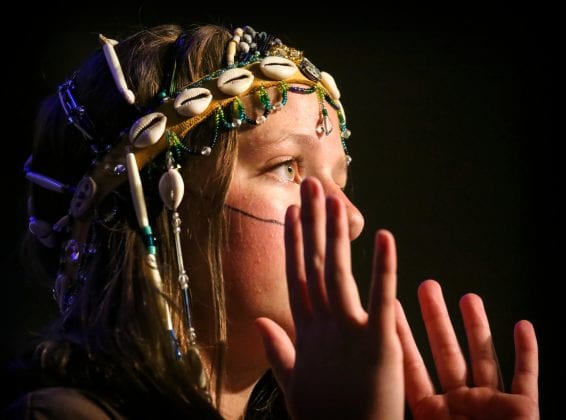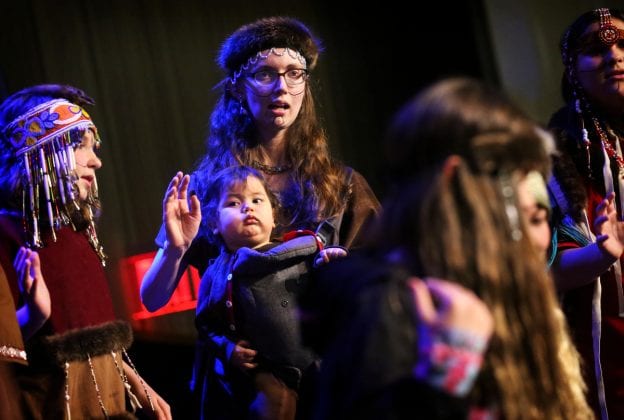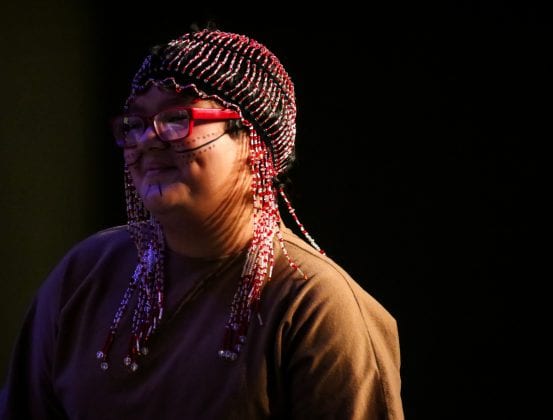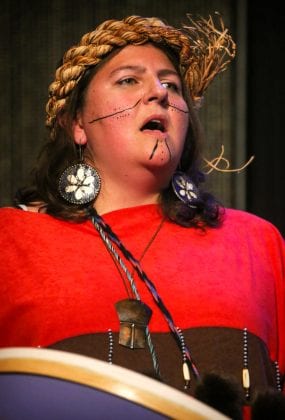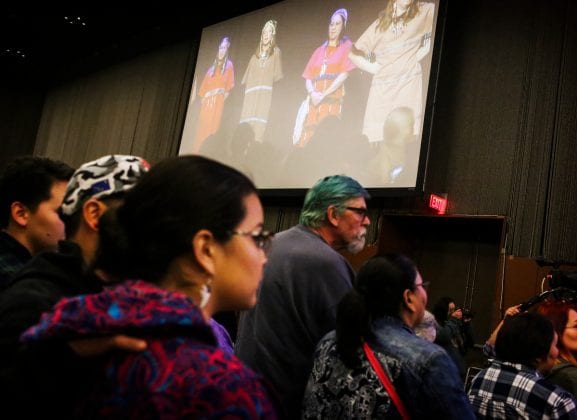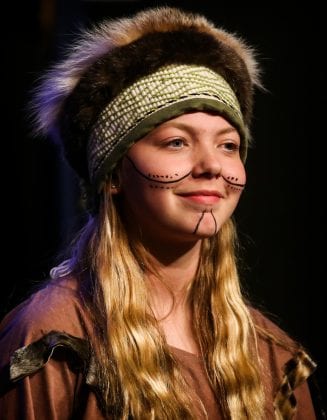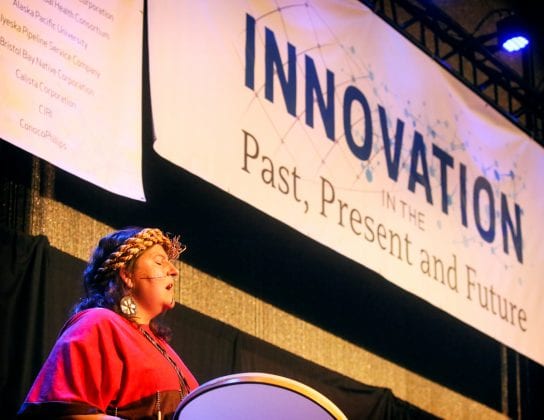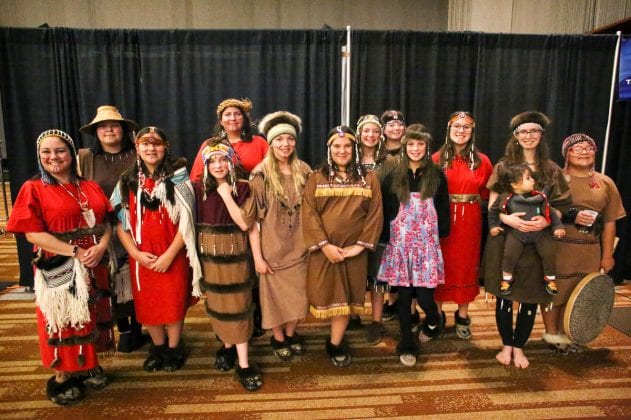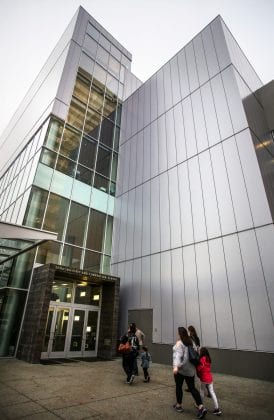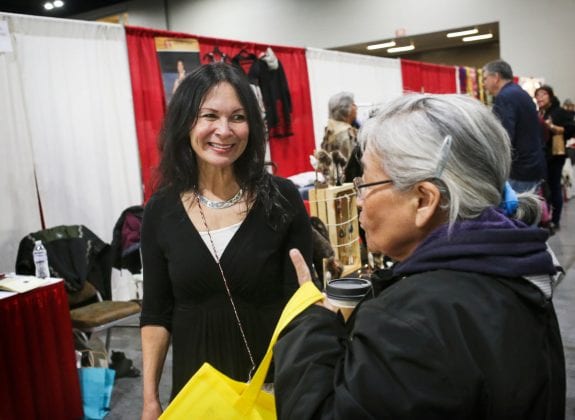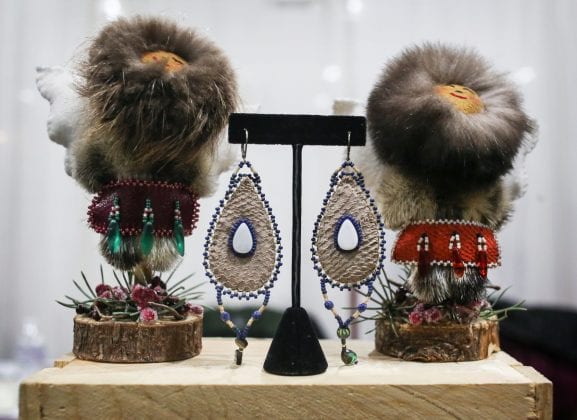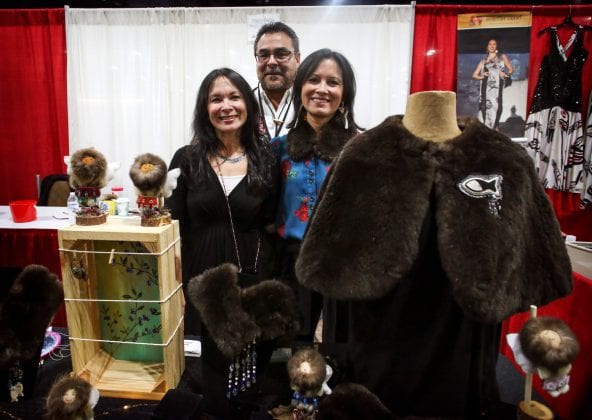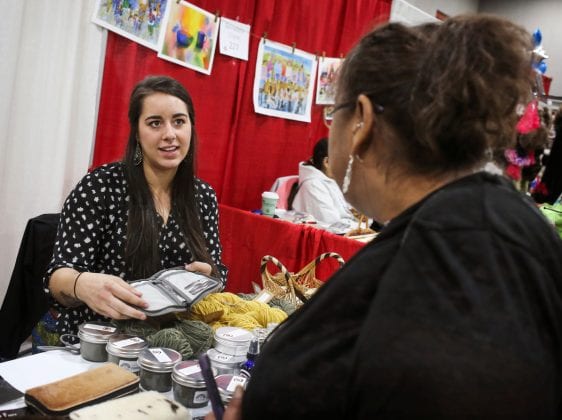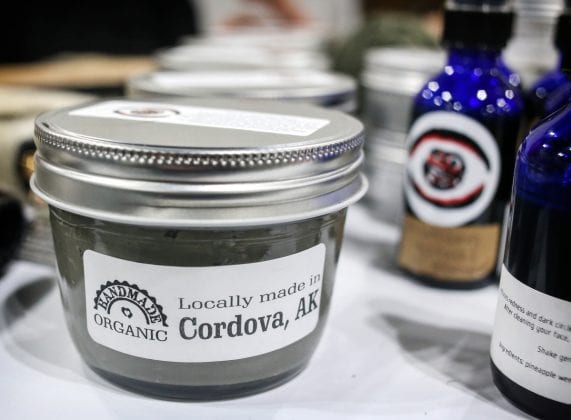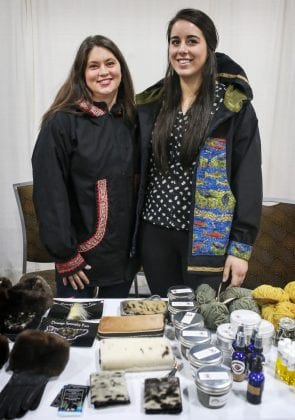The Cordova Ikumat Dance Group was in the spotlight in Anchorage on Oct. 18, as one of more than a dozen Native dance groups performing during two days of Quyana Alaska.
Native dance groups from across the state gathered at the Dena’ina Center in Anchorage Oct. 18 and 19, to offer evening performances for thousands of visitors there for the 2018 Alaska Federation of Natives convention.
The performance by Cordova Ikumat Dance Group, whose youngest member is just a year old, played to a growing crowd on the first night of Quyana. The event was organized back in 1982 to restore traditional dances and ensure they are passed on to future generations. “Quyana” is a Central Yup’ik word that means “thank you.”
The Cordova Ikumat Dance Group has a wide representation of Native cultures, including Athabascan, Aleut, Sugpiaq, Eyak and Tlingit, as well as other diverse cultures.
The dance group formed in 1997 with help from the late Lydia Robart of Port Graham. They have performed at numerous events throughout the state. For all but one member, however, this was the group’s first Quyana performance.
Dance group leader Brooke Johnson and drummer Holly West provided a steady beat for the dancers with their Alutiiq-style drums made out of airplane fabric.
Jessica Weaver performed with her 1-year-old son Greyson O’Brien.
“It was a lot of fun!” she said. “It surprised me how well he did, since it was past his bed time.”
He rocked back and forth in the baby carrier that Weaver wore as she danced and sang, taking note of the audience smiling throughout their performance.
“I hope he will continue dancing when he’s older,” she said.
Performers included: Angela Butler, Brooke Johnson, Denise Olsen, Holly West, Alice Graves, Allison Ritter, Harley Klix, Daisy Klix, Aaliyah Tiedeman, Willow Tiedeman, Taylor Tiedeman, Kiley Burton, Jessica Weaver and Greyson O’Brien.
Native Village of Eyak tribal council secretary/treasurer Pam Smith watched proudly from the first row as they performed.
“I thought they were great,” she said. “I was really surprised how their regalia had really advanced. They all looked quite beautiful up there.”
The group’s regalia featured beaded head dresses, qaspaq’s (kuspak’s), fur slippers, fur-trimmed fabric and drawn on Sugpiaq facial tattoos, all incorporating a brown, black and red color-scheme.
The lines on the cheeks represent the person’s mother and father. The dots above the line represent aunts and uncles while the dots below the line represent first cousins. Three lines on the chin represents marriage.
“Traditionally, we were a place where there is a lot of trading and inter-marrying prior to contact,” Johnson said, adding that this made for a lot of variety within the community, which is now represented in the dance group as well.
Those in the group who are Eyak or Tlingit, were encouraged by Johnson to represent a part of their clan in their regalia.
The convention’s Alaska Native art fair draws several thousand people annually, many looking at dozens of booths for gifts for the coming winter holidays.
At one booth, Raven Madison sold homemade and locally sourced salves, glacial mud masks, dyed yarn and hand sanitizer while Diana Riedel sold custom sea otter, harbor seal and sea lion fur clothing and wallets.
Across from their booth, Peggy McDaniel and Mary Babic sold fur clothing, art and jewelry.
This year’s AFN convention, billed annually as the largest gathering of Native people in the state, was Innovation: Past, Present and Future. The convention featured panels and presentations on federal, state and cultural issues, and debates of gubernatorial and congressional candidates, and award ceremonies.
